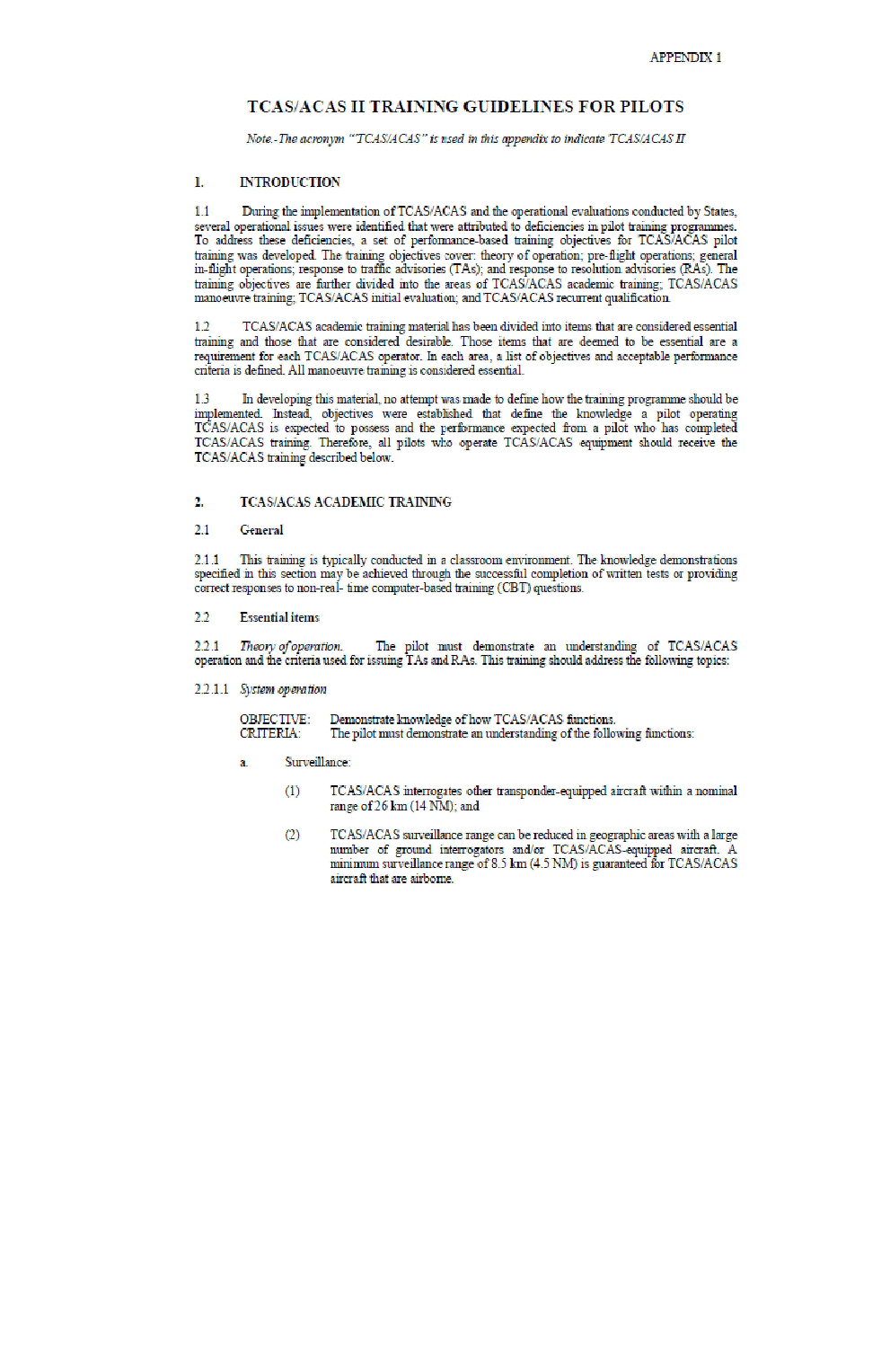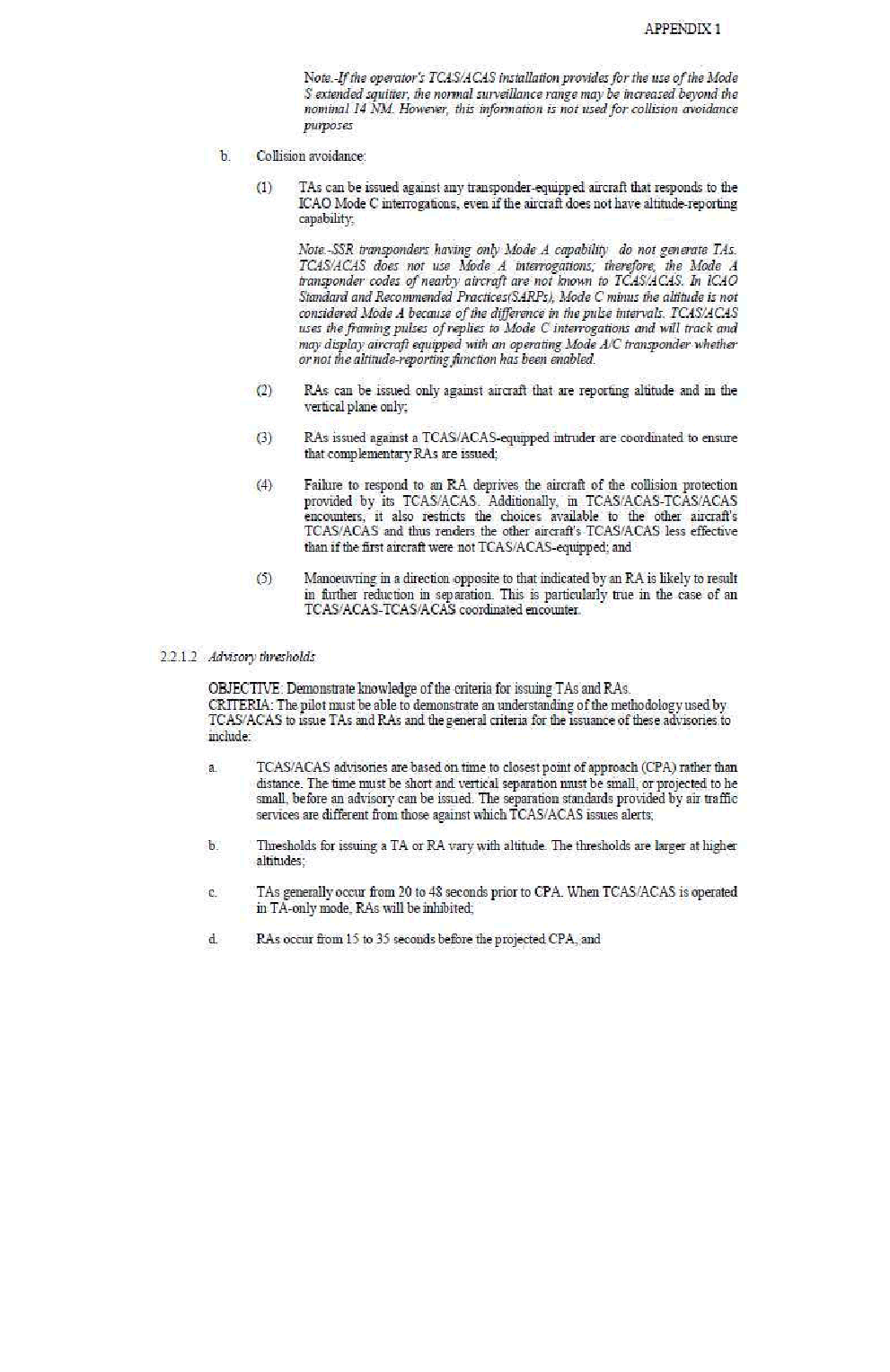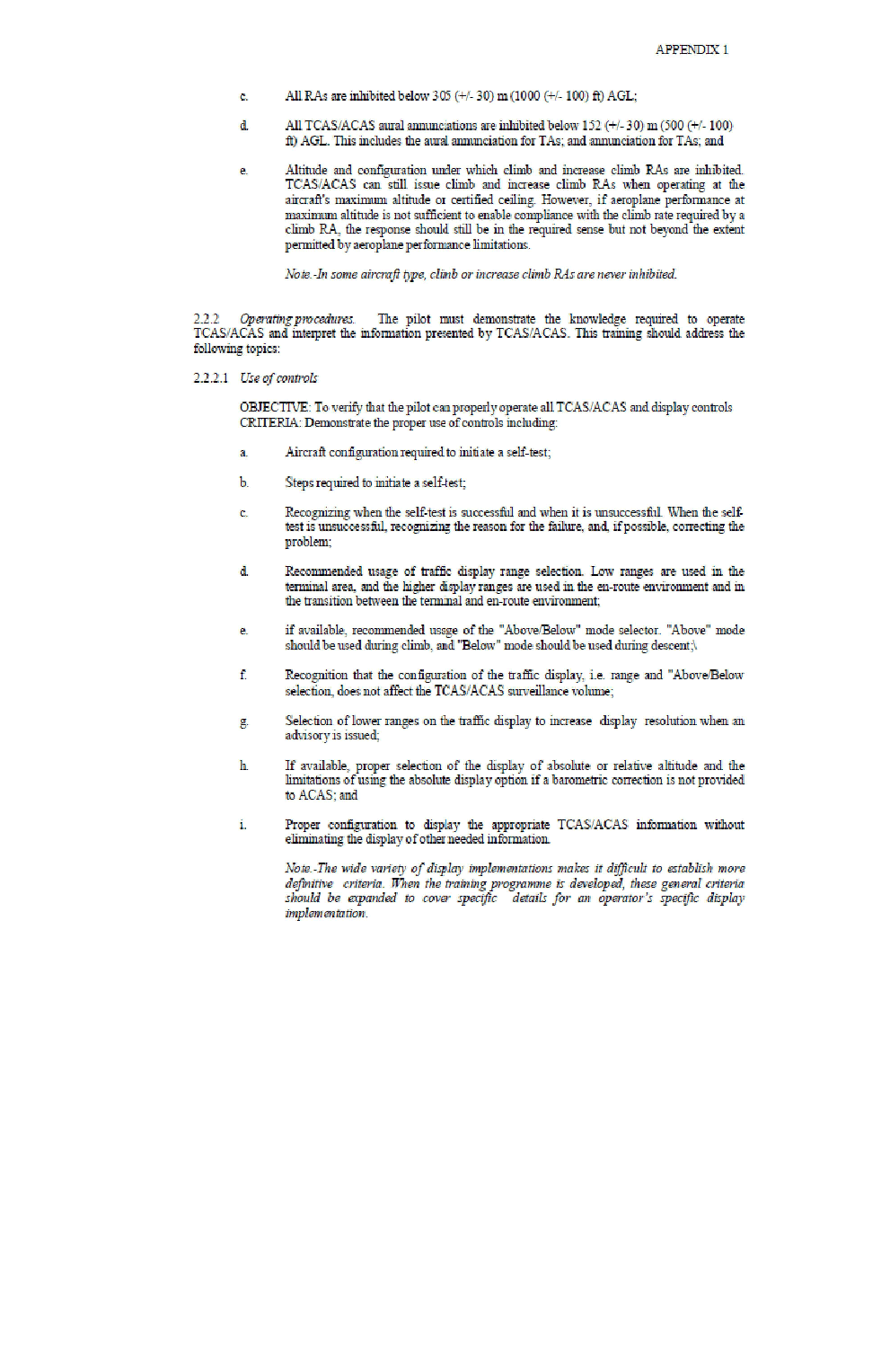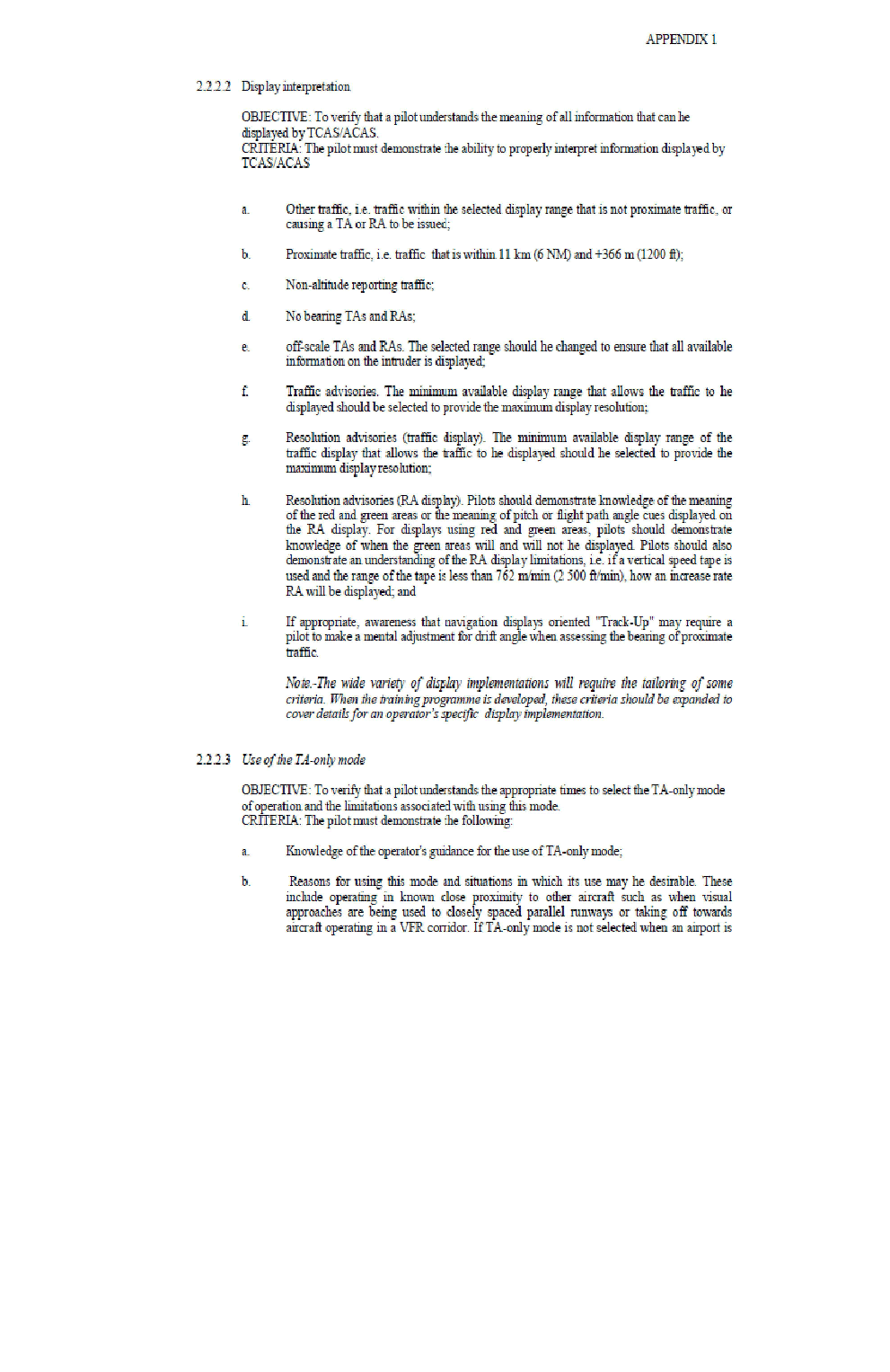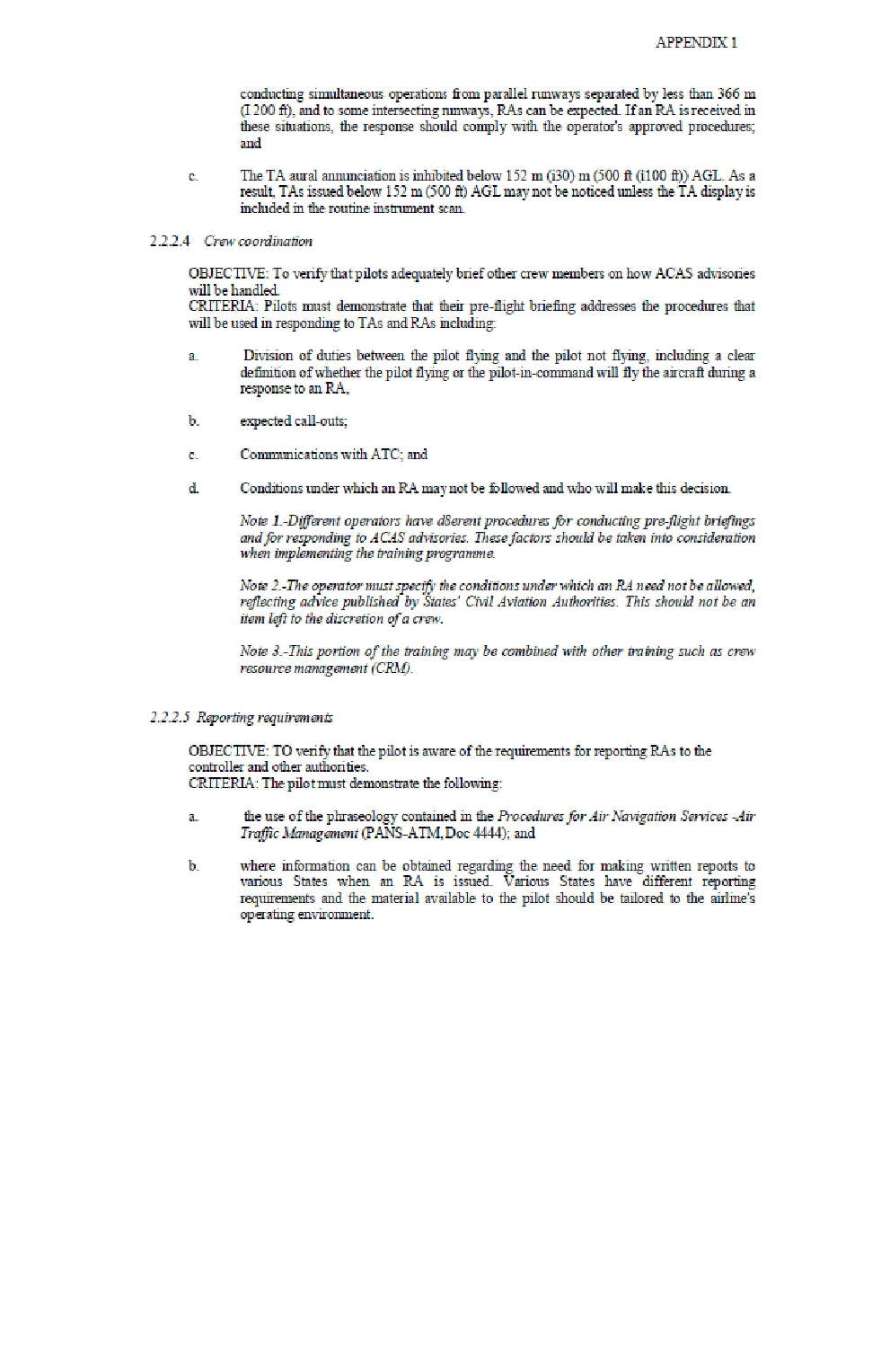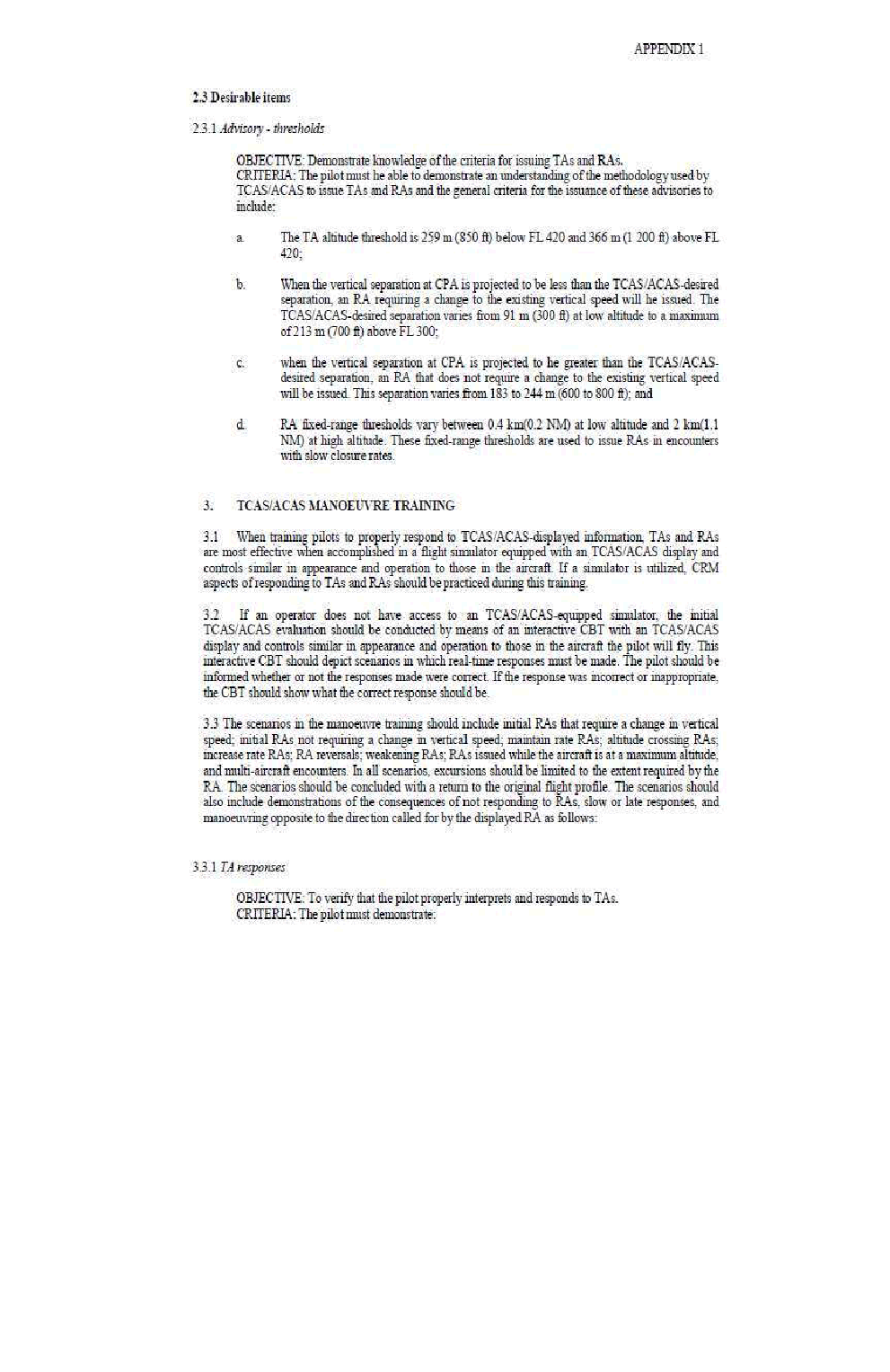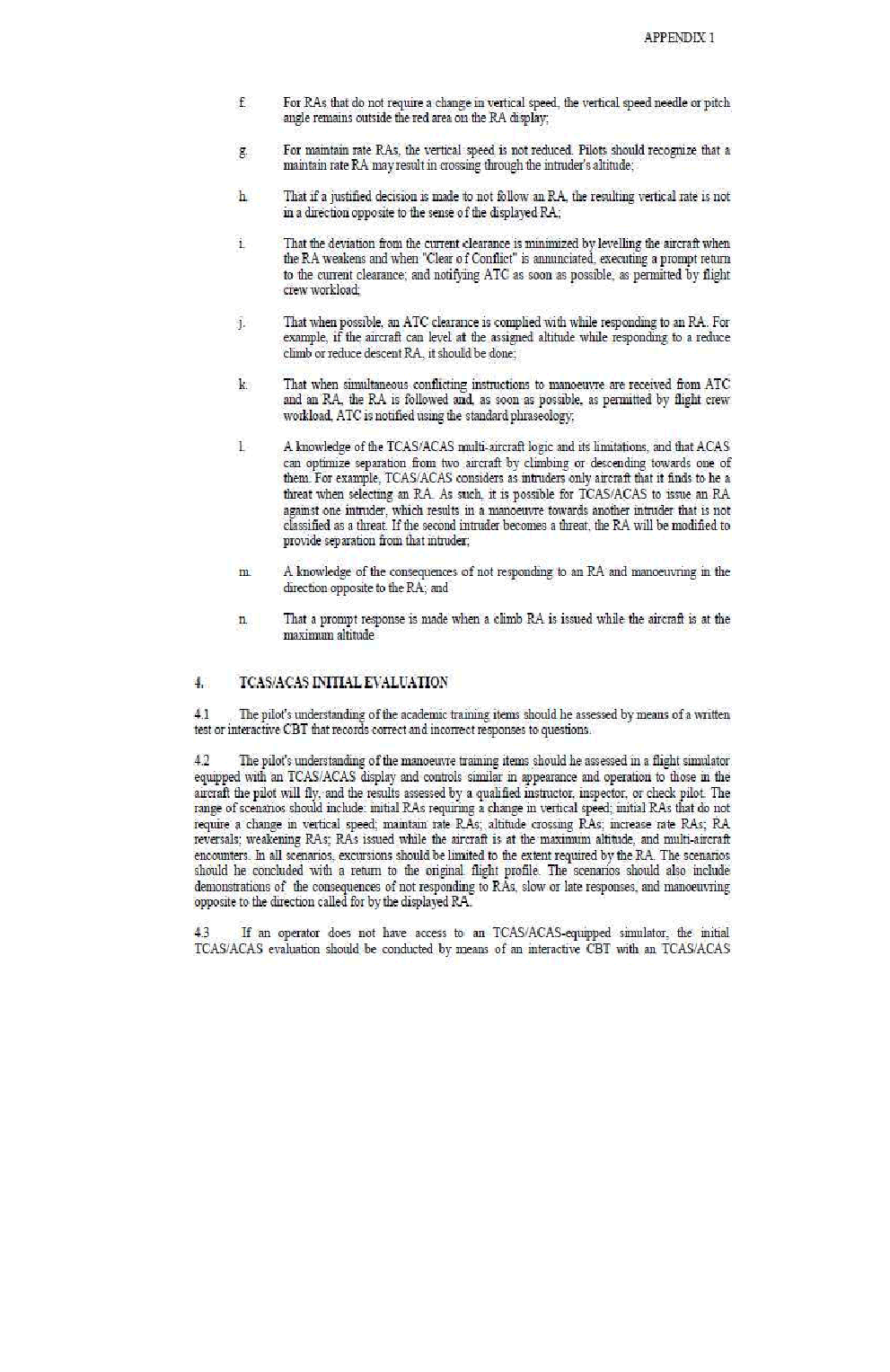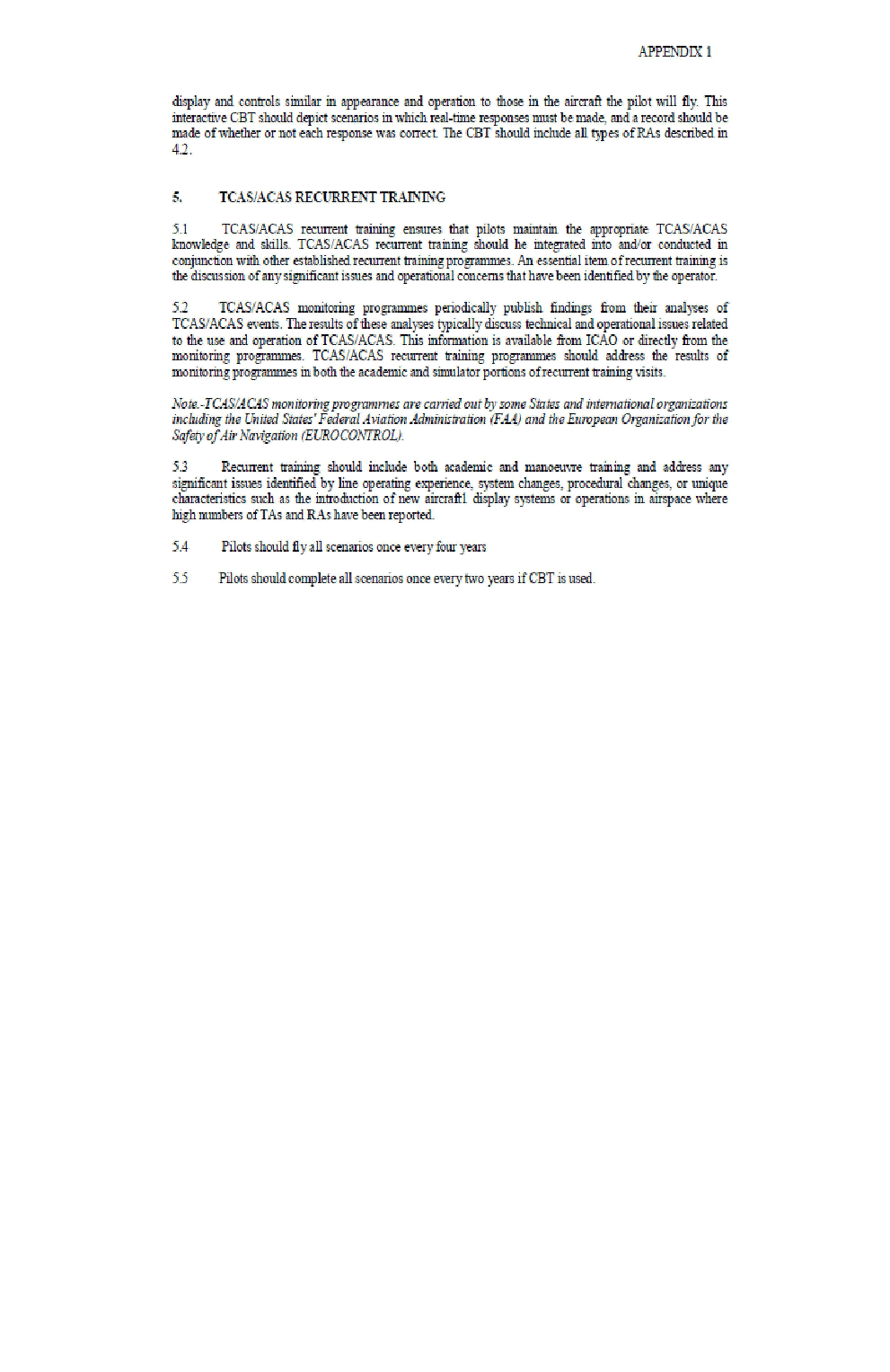ContactPost: AERONAUTICAL INFORMATION SERVICES Tel: 6-03-8871 4000 Fax: 6-03-8881 0530 AFS: WMKKYAYS Email: ais@dca.gov.my URL: aip.dca.gov.my | AIC for Malaysia | AIC 24/2005 Effective from 18 AUG 2005 to PERM Published on 18 AUG 2005 |
ContactPost: AERONAUTICAL INFORMATION SERVICES Tel: 6-03-8871 4000 Fax: 6-03-8881 0530 AFS: WMKKYAYS Email: ais@dca.gov.my URL: aip.dca.gov.my | AIC for Malaysia | AIC 24/2005 Effective from 18 AUG 2005 to PERM Published on 18 AUG 2005 |
Note 1. - The ability of TCAS/ACAS to fulfill its role of assisting pilots in the avoidance of potential collisions is dependent on the correct and timely response by pilots to TCAS/ ACAS indications. Operational experience has shown that the correct response by pilots is dependent on the effectiveness of initial and recurrent training in TCAS/ ACAS procedures.
Note 2. - TCAS/ACAS II Training Guidelines for Pilots are provided in Appendix A to this AIC.
Pilots shall not manoeuvre their aircraft in response to traffic advisories (TAs) only.
Note 1.- TAs are intended to alert pilots to the possibility of a resolution advisory (RA), to enhance situational awareness, and to assist in visual acquisition of conflicting traffic. However, visually acquired traffic may not be the same traffic causing a TA. Visual perception of a encounter may be misleading, particularly at night.
Note 2. - The above restriction in the use of TAs is due to the limited bearing accuracy and to the difficulty in interpreting altitude rate from displayed traffic information.
On receipt of a TA, pilots shall use all available information to prepare for appropriate action if an RA occurs.
In the event of an RA, pilots shall:
Respond immediately by following the RA as indicated, unless doing so would jeopardize the safety of the aeroplane.
Note 1. - Stall warning, wind shear, and ground proximity warning system alerts have precedence over TCAS/ACAS.
Note 2. - Visually acquired traffic may not be the same traffic causing an RA. Visual perception of an encounter may be misleading, particularly at night.
Follow the RA even if there is a conflict between the RA and air traffic control (ATC) instruction to manoeuvre.
Not manoeuvre in the opposite to an RA.
Note. - In the case of an TCAS/ACAS-TCAS/ACAS coordinated encounter, the RAs complement each other in order to reduce the potential for collision. Manoeuvres, or lack of manoeuvres, that result in vertical rates opposite to the sense of an RA could result in a collision with the threat aircraft
As soon as possible, as permitted by flight crew workload, notify the appropriate ATC unit of the RA, including the direction of any deviation from the current air traffic control instruction or clearance.
Note. - Unless informed by the pilot, ATC does not know when TCAS/ ACAS issues RAs. It is possible for ATC to issue instructions that are unknowingly contrary to TCAS/ACAS RA indications. Therefore, it is important that ATC be notified when an ATC instruction or clearance is not being followed because it conflicts with an RA
Promptly comply with any modified RAs.
Limit the alterations of the flight path to the minimum extent necessary to comply with the RAs.
Promptly return to the terms of the ATC instruction or clearance when the conflict is resolved.
Notify ATC when returning to the current clearance.
To incorporate the procedures for the operation of TCAS/ACAS II equipment as laid out in 4.1 of this AIC in the operations manual.
Procedure to be followed when there is a conflict between the RA and an air traffic control (ATC) is to be written in bold in the operations manual and to be emphasized during initial and recurrent training.
DATO' IR KOK SOO CHON
Director General
Department of Civil Aviation
Malaysia
